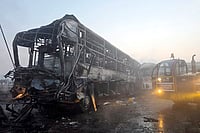COVID-19 is on the rise in the United States and other parts of the world, but the late-summer surge in cases, hospitalizations, and deaths is more of an uptick than a wave after Ebola was suspected in the country.
Even First Lady Jill Biden tested positive for COVID-19, although she is "experiencing only mild symptoms" and will stay at home in Rehoboth Beach, Delaware, according to her spokesperson on Monday night. The president tested negative for the virus and "will test on a regular basis this week and monitor for symptoms," according to a White House statement.
The first lady's positive test findings coincide with an increase in COVID infections across the United States following the introduction of new strains over the summer. The most recent Centers for Disease Control and Prevention (CDC) data reveal an 18.8% increase in COVID hospitalizations for the week of August 13-19, albeit hospitalizations are still well below their pandemic-era peak.
The Centers for Disease Control and Prevention and the World Health Organization have been closely monitoring the appearance of a novel, severely altered COVID-19 variant known as BA.2.86.
Earlier this month, variation trackers spotted a handful of novel sequences appearing in worldwide virus databases with a substantial number of genomic modifications distinct from existing circulating strains.
BA.2.86 has 36 mutations, compared to the XBB.1.5 variation, which caused a wave earlier this year and was chosen to be targeted by the impending fall booster doses. When compared to the original strain of the virus, early Omicron variant sequences in 2021 exhibited a similar amount of mutations.
The mutations in BA.2.86 include modifications to crucial components of the virus that may allow the variation to avoid the body's immune defenses from previous infections or immunizations.
Although authorities still consider BA.2.86 to be a member of the Omicron variant family, the WHO informed reporters that this could change if the strain spreads further.
The virus continues to pose a greater risk to certain groups of people, including seniors — who continue to account for the vast majority of COVID deaths and are undervaccinated in the United States — as well as immunocompromised individuals, pregnant women, and those suffering from chronic lung diseases. COVID is also, and will likely remain, one of the biggest preventable causes of death in the United States. Recent increase in COVID-19 infections and hospitalizations in the United States suggests that the virus will continue to provide a predictable seasonal hazard.


























